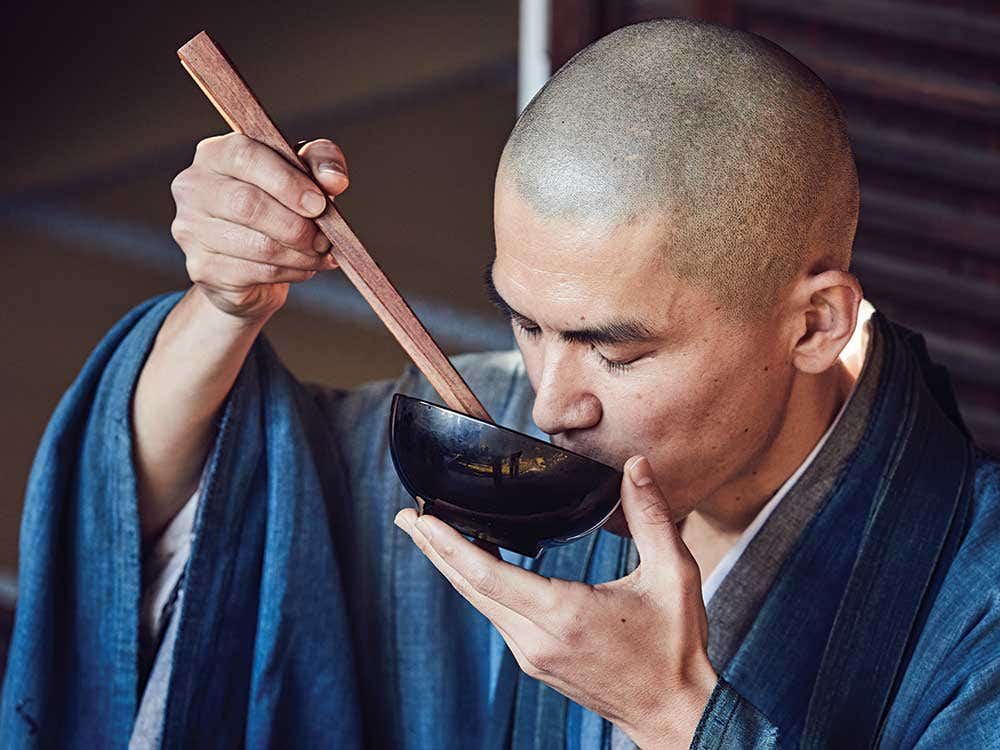
Can Kyoto’s Buddhist Cuisine Teach us All to Eat Better?
Meet the monks tending to Japan’s temples of the seasons
Enjoying a transcendent meal is a little like having a wedding or a car accident—time slows to a crawl. That’s the sensation I had in Kyoto while I negotiated biting into an umeboshi plum sheathed in translucent tempura batter, a dish so lovely that I nearly couldn’t bring myself to eat it. So many others arrived as part of this unforgettable three-hour lunch that I began to lose track: a perfect sphere of seafoam shiso sorbet; a clay teapot filled with a dark broth of shiitake mushrooms, gingko nuts, and custardlike tofu; pearly squares of wheat gluten fragrant with the aroma of yuzu. More memorable still was a cube with the color and consistency of the freshest buffalo-milk burrata. I pointed at it and the server spoke the words ebi imo. After fumbling with a translation app, I learned that I’d eaten a taro native to the Kansai Plain called a shrimp potato. Count me among its fans.
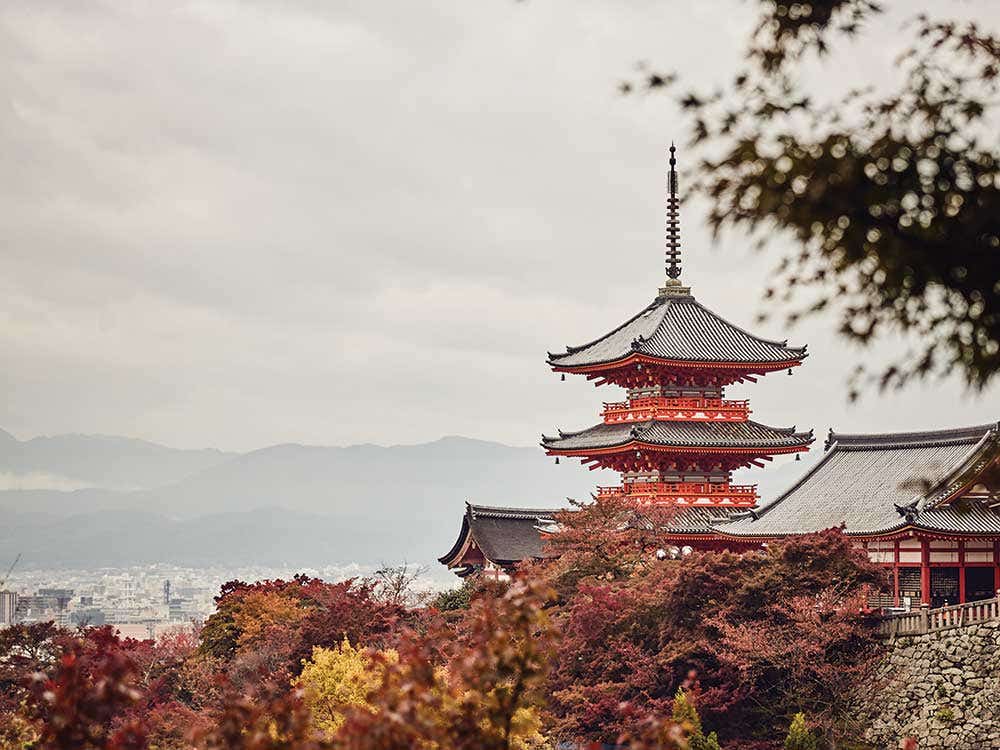
This, one of the most ravishing meals in my recent memory, didn’t take place in some hushed fine-dining pavilion but at Izusen, a chairless, bustling restaurant inside the Daitoku-ji temple complex. I could hear shouting from the kitchen. Behind me, a busload of visiting retirees noisily enjoyed their meal. I was unaccustomed to sitting on the floor and kept sliding off a growing stack of cushions. One of the women caught a glimpse of my ordeal and let out a delighted peal. She pointed at me and soon two dozen elderly tourists in sun visors and bucket hats were holding themselves with laughter.
Shojin ryori is Japan's oldest codified cuisine but is seldom encountered outside temples, religious festivals, and funerals. In accordance with the Buddhist prohibition against killing, shojin (which means "earnest effort") eschews animal products and in retrospect appears to be eerily prophetic, having presaged a whole slew of contemporary food trends—by about a millennium. It insists on produce that's both local and in season, requires that it be prepared with simple hand tools, and allows no waste—instead of "nose to tail" you could call it "root to leaf." And as I was discovering, despite a fairly limited ingredient list, shojin can produce textures and flavors limited only by the cook's ability and imagination.
Another thing I was discovering: Writing about the food of Japanese monks and nuns for a magazine like this one presented a conceptual difficulty. From the Buddhist perspective, cooking is a form of spiritual practice that produces nourishment to prepare the body for hard work and meditation. Unlike, say, Memphis barbecue or the cuisine of Lyonnaise bouchons, shojin doesn't have a whole lot to say on the subject of pleasure. Shojin has bigger fish to fry. Its goals are nothing less than permanent enlightenment, nirvana, the fundamental transformation of the human mind and society. It does not fit easily into the hedonistic, novelty-addled world of food journalism.
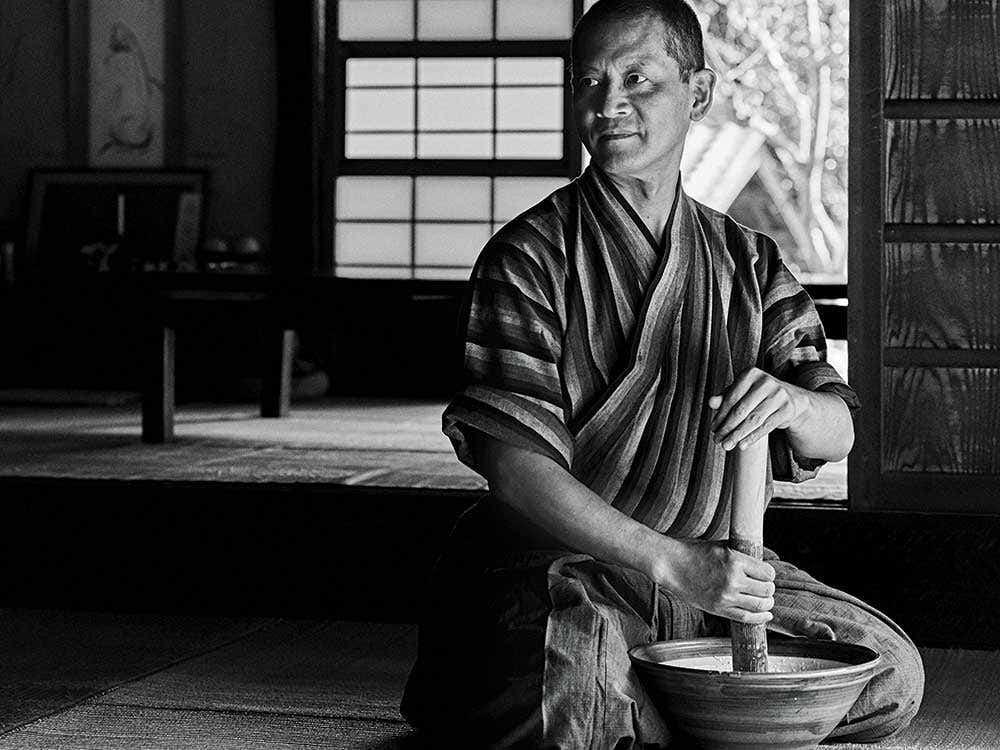
I chanced upon my salvation, journalistically speaking, in the person of Toshio Tanahashi. He'd practiced the art of shojin as a Zen monk in a rural temple near Kyoto and then did something unprecedented—he opened a restaurant in Tokyo's chic Omotesando neighborhood that presented vegan monastic cuisine in a fine-dining context. The restaurant, Gesshin Kyo, became both successful and influential. Reviewing it for the New York Times, author and culinary authority Elizabeth Andoh described it as a "secular space imbued with a spiritual respect for food." It was a spiritual respect that nonetheless made room for distinctly un-Japanese elements like tomatoes, mangoes, and white bordeaux. Freed from temple kitchens and its role as nourishment, shojin dazzled Tanahashi's diners with its unfamiliar and subtle beauty. The Zen monk had become a famous chef by reimagining monk food.
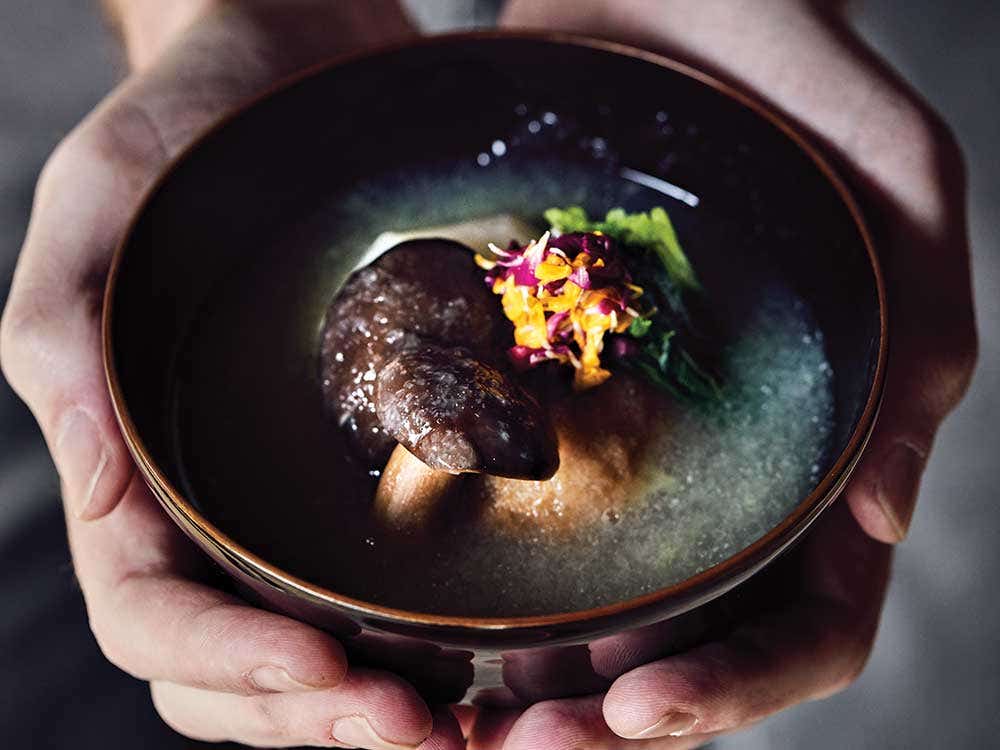
Tanahashi closed Gesshin Kyo after 15 years, in 2006. Along the way he wrote two books about shojin ryori and came to see it as a corrective to the world's restaurant culture, which he believes to be addled with costly, scarce, and unhealthy ingredients. "In the long term, gastronomy is unsustainable," he wrote me in an email, an odd sentiment from a chef who'd recently spent a month in Paris delving into the finer points of vegetables with the staff at Alain Ducasse's restaurant at the Plaza Athénée. "It's crucial that good nutrition and sustainability become a part of restaurant culture," he continued, "and the Michelin Guide should award a fourth star for the food's healthfulness." As Tanahashi sees it, shojin is not merely the nourishment of monastics but the would-be lifeline and future of global food culture—the vegan blueprint of how we will one day eat.
"Come to Kyoto," he wrote me, offering to lead me on a tour through the world of shojin in its hometown, a world that he assured me was closed to outsiders. He also promised to cook for me the "modern" version of shojin that he had developed over the course of his career—to demonstrate that health, spirituality, and sensory pleasure could coexist on the same plate. During our correspondence, I was beginning to sense that Tanahashi didn't put much stock in the Japanese penchant for self-effacement nor in the Buddhist ethic of humility. "Who else in Japan is making modern versions of shojin?" I asked him. "No one," he replied.
When we finally met at my hotel in Kyoto, Tanahashi turned out to be an intense, slight, unsmiling man in his 50s. He wore an expensive-looking blazer and fedora by the designer Yohji Yamamoto that, in contrast with his rather glum mien, danced with just about every color in the visible spectrum. He greeted me by brusquely clasping my hand in his. Noticing my surprise at his costume, he remarked, “I bought these when I was rich.” Our acquaintance was off to a peculiar start.
Shojin ryori was brought to Japan from China in the sixth century, and by the 13th—when the Zen patriarch Dogen wrote a manual titled “Instructions for the Cook”—it had become thoroughly Japanese. In the 15th century it was reimagined again by Sen no Rikyu, the great popularizer of the tea ceremony and the aesthetic of exquisite shabbiness known as wabi-sabi. The simple shojin dishes and powdered green tea that Rikyu served in his rustic teahouses eventually gave rise to kaiseki, the elaborate, time-consuming, and often stunningly costly multicourse dining experience one encounters in Japan today. The word kaiseki comes from the warm stone that mendicant monks once pressed to their stomachs to dull hunger pains. That it came to describe dozens of laboriously plated courses served on museum-grade ceramics and lacquerware in hushed dining rooms and gardens is a distinctly Japanese paradox.
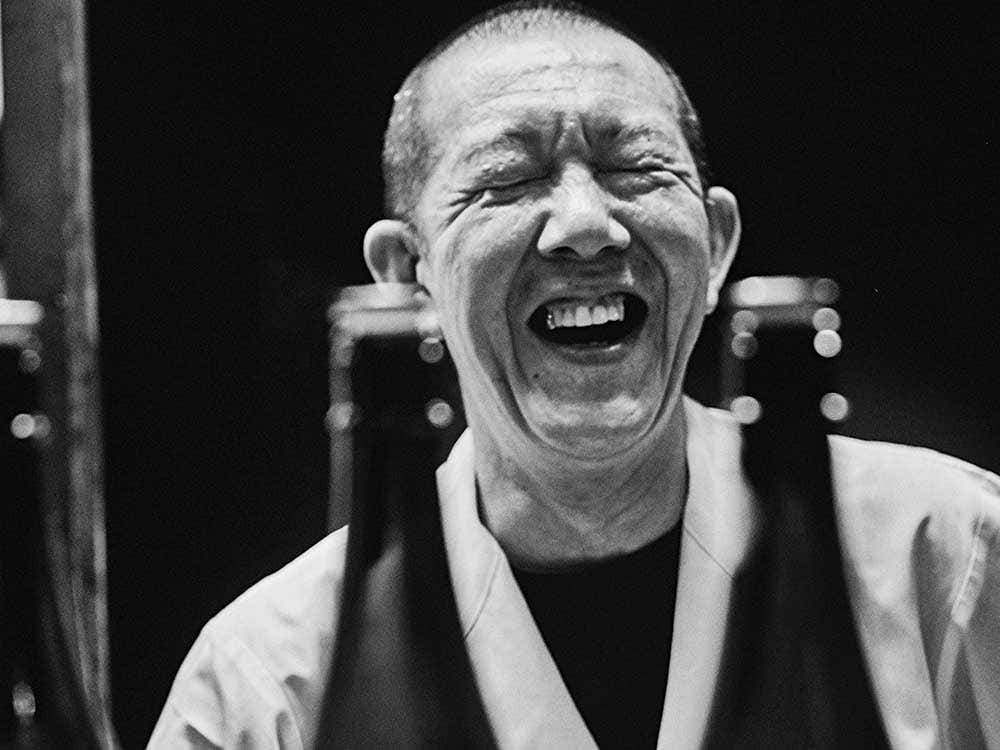
This paradox colors the world of shojin, too—a world poised between the rigorous simplicity of spiritual practice and its often exquisite trappings. Consider the tools found in a shojin kitchen. On the day we met, Tanahashi brought me to Aritsugu, renowned as a shrine among the international brotherhood of knife fetishists. The family-owned shop has been in continuous operation since 1560 and once supplied swords to the Imperial House of Japan.
At the modern-day shop in Kyoto's enclosed Nishiki Market, we shimmied past vitrines of eye-wateringly expensive sashimi blades to a back room, where a soft-spoken manager showed us the principal tools of the shojin chef. There was an adorably petite vegetable cleaver called a nakiri-bocho; a one-sided grater of tinned copper trimmed in magnolia wood and deer antler used for working with lotus root and wasabi; and a strainer-ricer made of the braided hairs of a horse's tail bound with a band of cherry bark. These utensils, made by hand, were remarkably beautiful.
“Things that are made by humans for humans are good for the spirit,” Tanahashi declared. He explained that shojin kitchens forbid plastic and machinery. Taking care of one’s tools, he added, turning the cleaver in his hand, was in itself a form of Buddhist meditation.
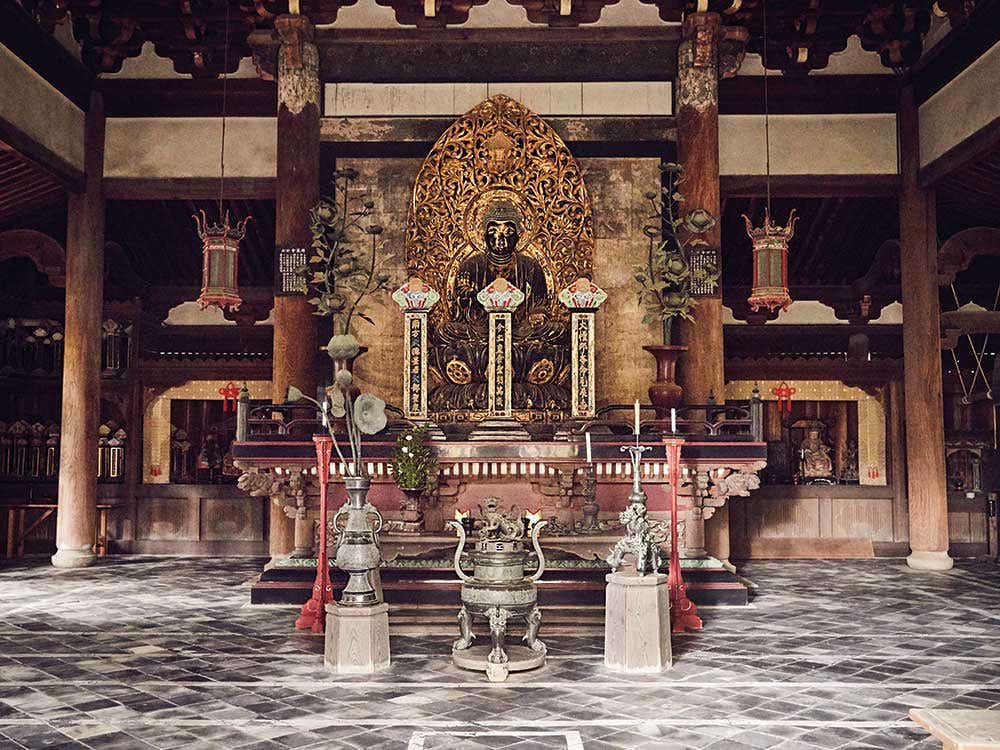
Over the next several days, Tanahashi led me on a breakneck tour of shojin—not the grand theory behind it, but the myriad building blocks. He referred to it as my "education." At an antique lacquerware shop called Uruwashiya, behind one of those dimly lit Kyoto storefronts that always look closed, Akemi Horiuchi, the elegant proprietor, showed us the most important dishes used in serving shojin—several attractively worn red bowls and a matching tray. Red is the auspicious color of the temples, she explained, and the tray's raised edge indicates that it encloses a sacred space. Shojin must be served in handmade vessels, and few are as painstakingly handmade as these—delicately carved wood covered with layer upon layer of urushi lacquer, making the dishes supple, lightweight, and resilient. The lacquer on the bowls Horiuchi showed us had faded in places—a prized quality, she said—because they were made nearly 500 years ago, in Sen no Rikyu's lifetime.
Afterward Tanahashi and I sat at a tea merchant's counter, sipping from handmade lilliputian cups. Shojin's spiritual twin is tea, and we sampled savory, piney sencha; grassy, pleasantly bitter matcha whipped to a neon-green froth with a bamboo whisk; and a Kyoto specialty, hojicha, a roasted reddish-brown tea that smelled like a campfire.
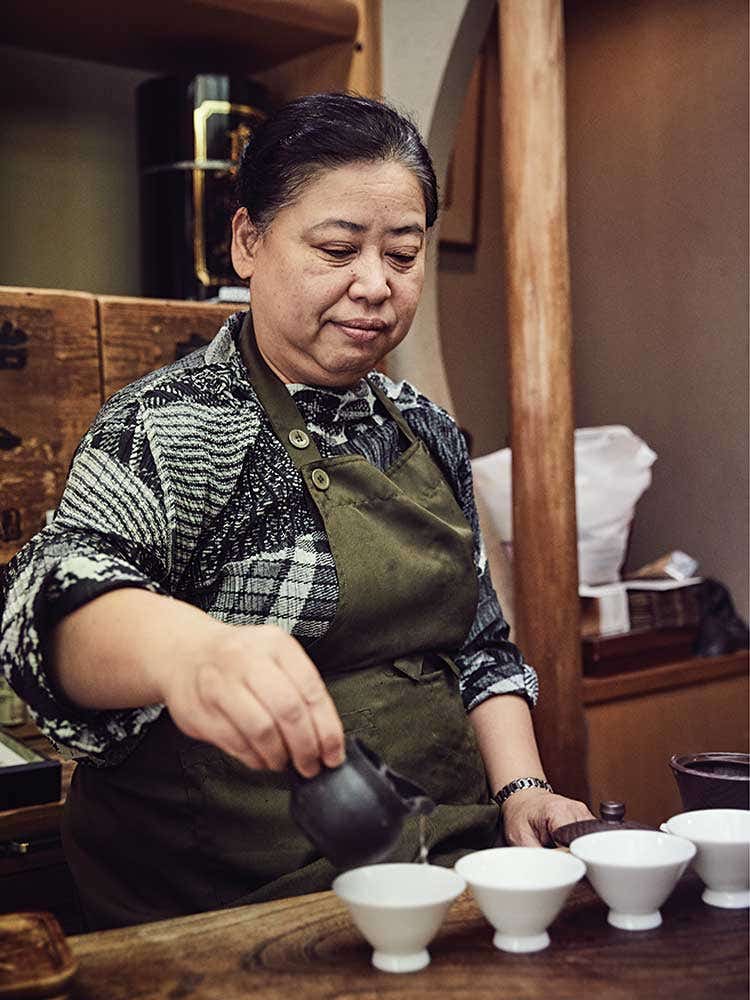
Our next stops on Tanahashi's excursion were for three savory shojin staples—tasted in their best guises. No ingredient turns up in shojin dishes as frequently as tofu, and I'd never tasted tofu like they make it at Hirano, a homely, closetlike institution on Fuyacho Street. The crisp fried rectangles were tasty enough, but Hirano's reputation rests on the snowy, disconcertingly creamy fresh stuff, which had a complexity I'd never expected from soybeans.
At the posh Fuka—which resembled a Ginza boutique more than a food supplier—Tanahashi and I sampled the oddly versatile wheat gluten called fu. It's made by washing wheat flour dough until the starch granules are gone, then cooking and sometimes drying the remaining sticky gluten. We tasted velvety fu in soup, a crisp, meaty version in a stir-fry, and a fu confection filled with sweet red bean paste called fu-manju.
My favorite of the three actually turned out to be tofu skin, or yuba, a gossamer, paper-thin delicacy that in its basic form tastes a little like good homemade pasta. The version Tanahashi chose came from Senmaruya; being less than 200 years old, the shop is a relative newcomer to the Kyoto food scene. Its youthful proprietor, Ochi-san, pointed to a well near the counter that dated to the 19th century. Kyoto's aquifers give water renowned for its low mineral content and subtle sweetness, which makes the city's tofu and yuba sought after throughout Japan.
Later, Ochi-san drove us to Senmaruya’s production facility at the city’s edge, where we watched yuba firming up on trays of steaming soy milk. Collecting it is a task too delicate for machines, and workers in blue smocks and face masks walked quickly along the rows of trays, lifting the tofu skin with a bamboo stick and hanging it on steel rods. Tanahashi stood by the door, glancing impatiently at a tablet with our itinerary; we were scheduled to visit a daikon farmer across town. My education was not yet complete.
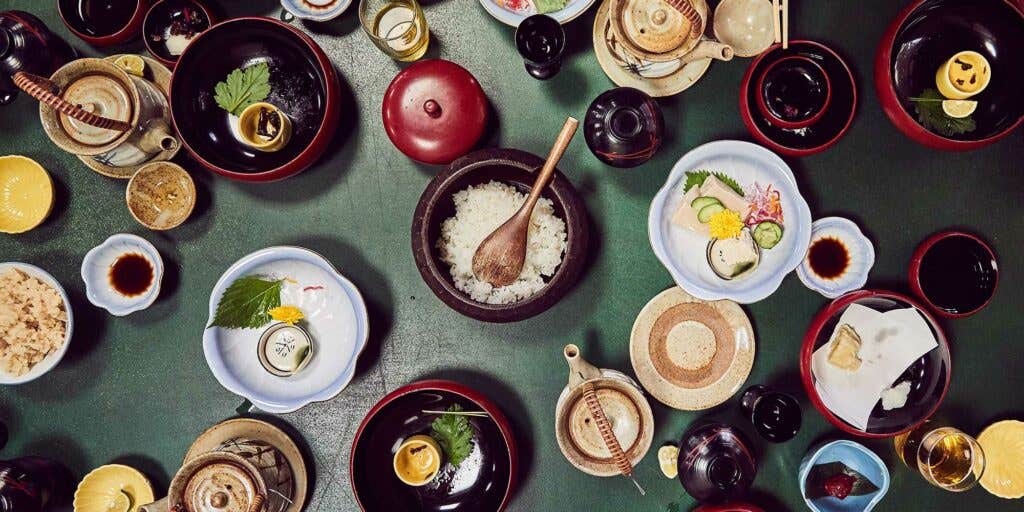
That evening, Tanahashi and I visited a casual restaurant near Shijo Street named Ki Haru. It didn’t serve shojin but was shaped by it nonetheless. Because Kyoto is the country’s Buddhist capital, its cuisine remains hugely influenced by temple fare: Sesame tofu, which kicks off many meals here, is a shojin classic. Even neighborhood joints like Ki Haru rely on vegetables and grains more than they do elsewhere in Japan. Our interpreter was close friends with the restaurant’s loud, excitable, vividly bald chef-owner. His name was Takashi Tsubaki but everyone called him Taisho, which means “General.” His face was so animated that it looked painted with a brush. He kept a collection of old and rare sakes behind the bar, and poured them for everyone so relentlessly that three courses into our stupendous meal, everyone—most of all Taisho himself—became undeniably drunk.
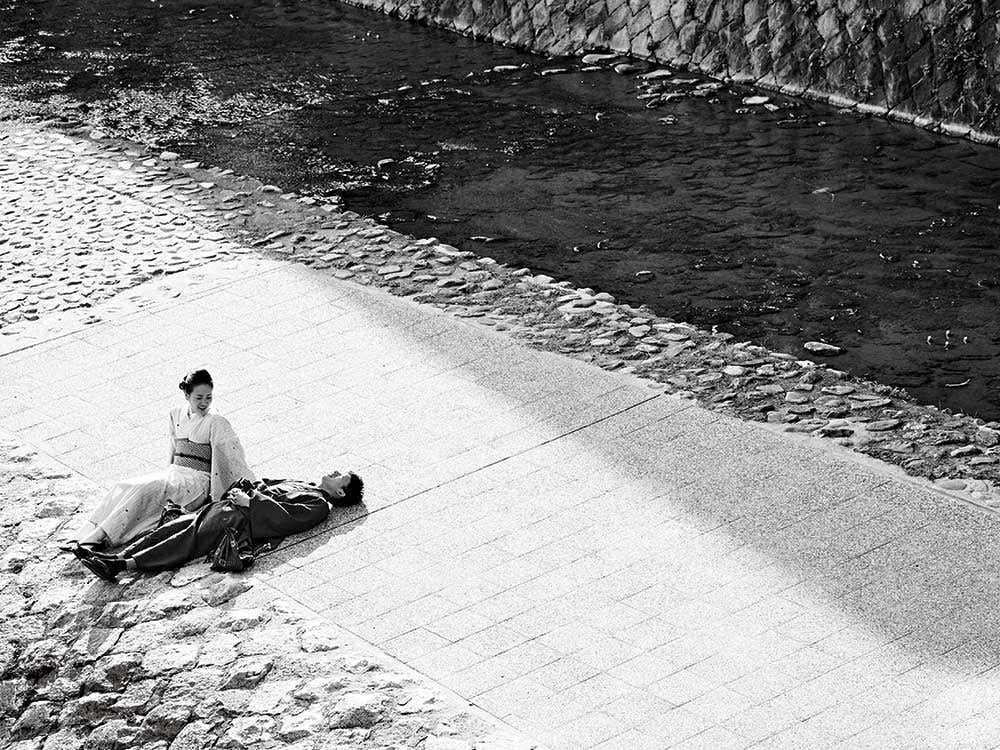
In honor of Tanahashi's visit, Taisho prepared a meal of mostly vegetables. After an appetizer of mizuna, chrysanthemum, and shimeji mushrooms, Taisho ladled out a soy milk–based soup with broccoli, daikon, zucchini, and lightly grilled leek whites. In the meantime, he'd dropped several large onions on the grill. They turned so smoky and soft that I wondered why more people back home didn't grill whole onions. Taisho followed this with wedges of tempura of shredded carrot and gingko nuts that had been boiled with rice. Like everything else he served, he claimed to have invented the dish on the spot—a playful shojin improvised with the ingredients at hand.
The counter seating area at Ki Haru was filled entirely with regulars who’d exchanged loud friendly greetings with Taisho; a visitor showing up without an introduction was liable to be politely but firmly turned away. (Elizabeth Andoh explained to me that this policy is actually quite common in Japan. “The Japanese prize harmony over a level playing field,” she said. “Restaurants strive to make sure that every diner wants to be there and will appreciate what it does.”)
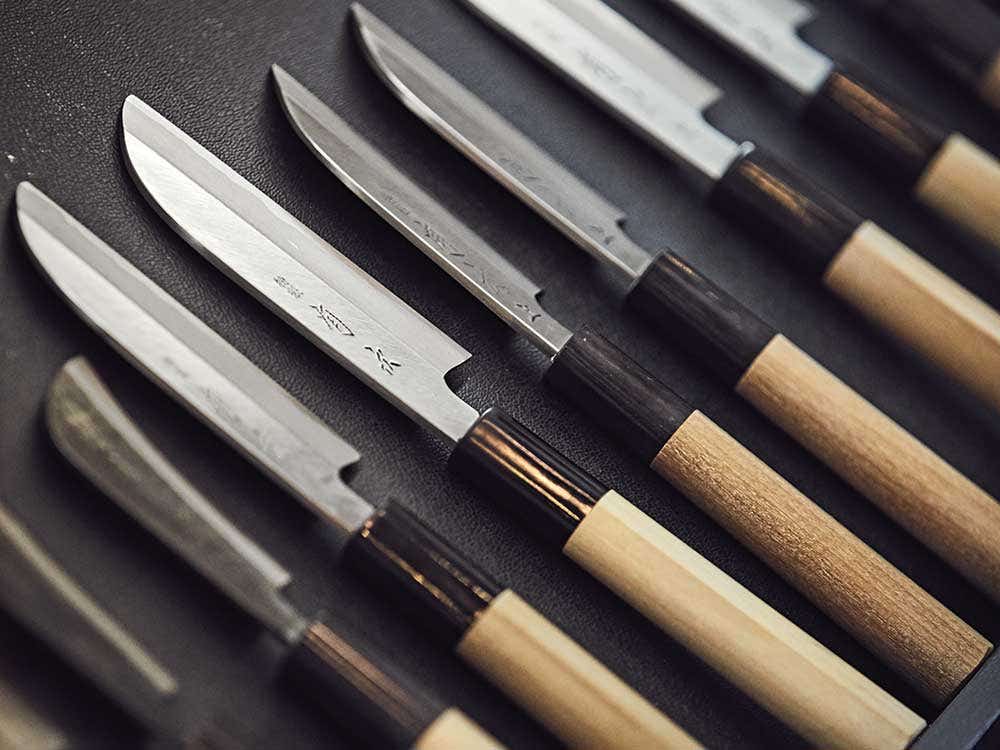
Amid chopping, grilling, and pouring, Taisho told us that he adored his children but strongly disliked his wife, and that the restaurant served as a refuge from his marriage. A regular who sat beside us at the bar—a badgerlike man in a sweater vest who smoked cheap cigarettes and guffawed loudly during the meal—chimed in with unflattering comments about his wife, and I wondered whether spousal disparagement was a leitmotif of Kyoto nightlife.
During the meal, Tanahashi told me about finding shojin, or rather having it find him. His leap into the unknown came when he was 27 and working for an advertising agency in Tokyo. Something about his life felt empty. "I was born in Japan but didn't know what it meant to be Japanese," he told me. He thought he might have glimpsed an answer in a documentary film about Myodo Murase, a 60-year-old Zen nun. She was renowned for her wry sense of humor and the shojin meals she prepared at a minuscule temple in Otsu, a town in Shiga Prefecture, meals made all the more remarkable by the fact that Murase had lost an arm and the use of a leg in an auto accident.
Shortly after watching the film, Tanahashi gave notice at his job, moved to Otsu, and became Murase's disciple. He called his teacher a "character" but added, "I was very lucky." Sitting meditation, called zazen, is the heart of Buddhist practice, but Murase taught that this was unnecessary. Her radical teaching was that the profound mindfulness required to cook with all of one's being was enough to attain enlightenment. For her disciple, this meant cooking from morning till night. "No one made sesame paste from scratch," Tanahashi told me, but every week he spent hours in a lotus position on the floor of Murase's temple, grinding sesame in a mortar. He seeded eggplants (picture for a moment the number of seeds in an eggplant), peeled daikon, grated mountains of lotus root. The whole time Murase's promise stirred at the back of his mind—cooking could make you a Buddha.
Several hundred feet from Izusen, Tanahashi and I knelt on the terrace of one of Daitoku-ji’s most scenic sub-temples, facing a pond and a garden bathed in late-afternoon sunlight. Sen no Rikyu was buried a few buildings away. The sub-temple was closed to the public, but Tanahashi had wrangled us an invitation because the head monk had, in a former life, worked at his Tokyo restaurant as a busboy. The monk, Jobun Haruta, was dressed in a patched indigo robe and appeared to be in his mid 20s. He was improbably beautiful, and there was something about his manner that suggested ease and unflappable kindness. I’m as skeptical as anyone of spiritual men, but he looked as if a lamp glowed inside him. “A person who walks the path,” our interpreter muttered. Haruta began to seem even more remarkable when I learned that he was 40 years old.

Haruta agreed to demonstrate for us the ritual of a midday monastery meal. We watched as he knelt on the terrace and unwrapped several lacquered bowls and a pair of absurdly large chopsticks. He showed us the chopsticks’ secondary function—announcing the periods of a monastic meal—by clacking them together. Before eating, monks recite five reflections, which instill mindfulness, gratitude, and joy. Afterward, Haruta closed his eyes and chanted the Heart Sutra, one of Buddhism’s most inscrutable texts. “All things are empty: Nothing is born, nothing dies, nothing is pure, nothing is stained,” Haruta sang, lit by the setting sun. Then he ladled miso soup and plain white rice into the bowls and proceeded to eat with deep concentration. We sat nearby, watching him a little self-consciously. When he was done, Haruta cleaned the bowls with a piece of pickled daikon, stacked, and wrapped them. Then he looked up at us and grinned.
Later, while we slurped warm matcha from lopsided clay bowls, Tanahashi sat beside Haruta, put his arm around him, and posed for a photo. I couldn't decide whether the look on Tanahashi's face was envy, admiration, or pride. Earlier, he'd told me that he was living alone in rural Okinawa and mulling his next career move. "I'm in a slump," he admitted. In the meantime, his former busboy had become an important figure in the Buddhist world, and I wondered what Tanahashi was thinking about, having traded the unbending routines of monastic life for the inconstant promises of worldly success. I never worked up the nerve to ask him.
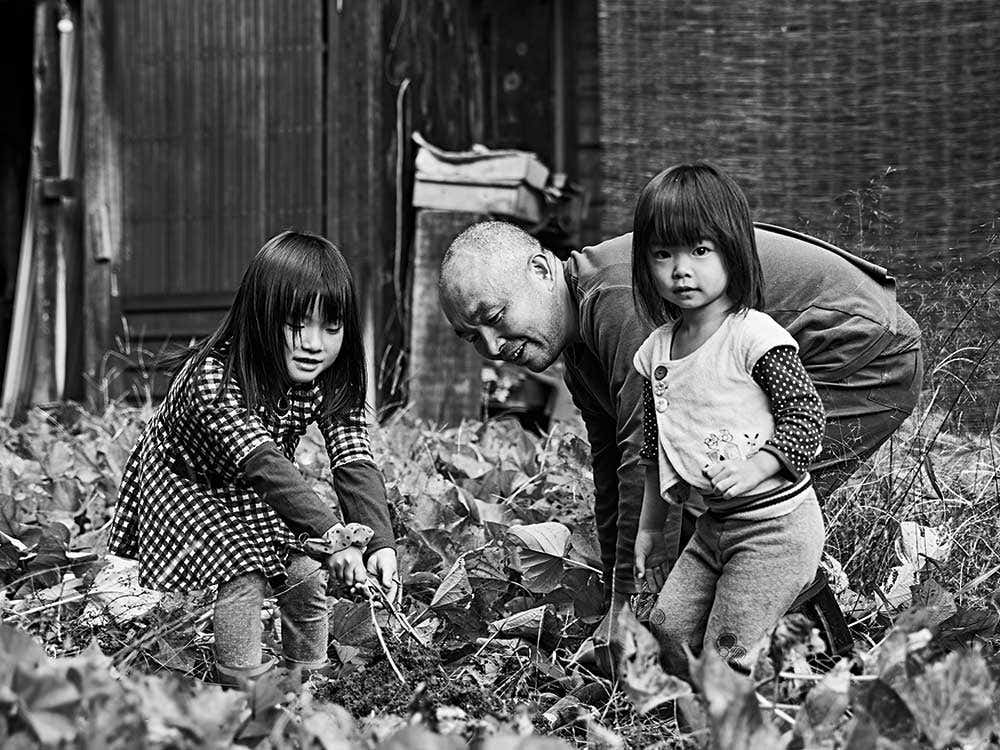
I've been to my share of memorable places, but none quite like Mugino-ie. Below a thatch-covered farmhouse, terraces of vegetable rows cascaded down a mountainside all the way to Lake Biwa, which was covered in morning mist and glowed the color of old silverware. We were 25 minutes from Kyoto but wouldn’t know it. A blue-black crow pecking the ground beside me let out an inquisitive caw. We were greeted by a farmer, a smiling man in his 60s named Takashi Yamazaki, who held his 2-year-old granddaughter, Yuki. Yamazaki said his grandfather had come here from Kyoto shortly after the bombing of Hiroshima and Nagasaki, when Japan’s cities were devastated by war. He’d given up on urban living and decided to become self-reliant, eating only what he could grow. Five generations of his family had sustained this organic permaculture experiment. The eggs came from their henhouse, and everything they ate grew on this land. After speaking about the war, Yamazaki asked about America. I grimaced and said that the recent presidential election had left me shaken and scared. The farmer looked me in the eye and said, “Sometimes terrible things happen to great countries.”
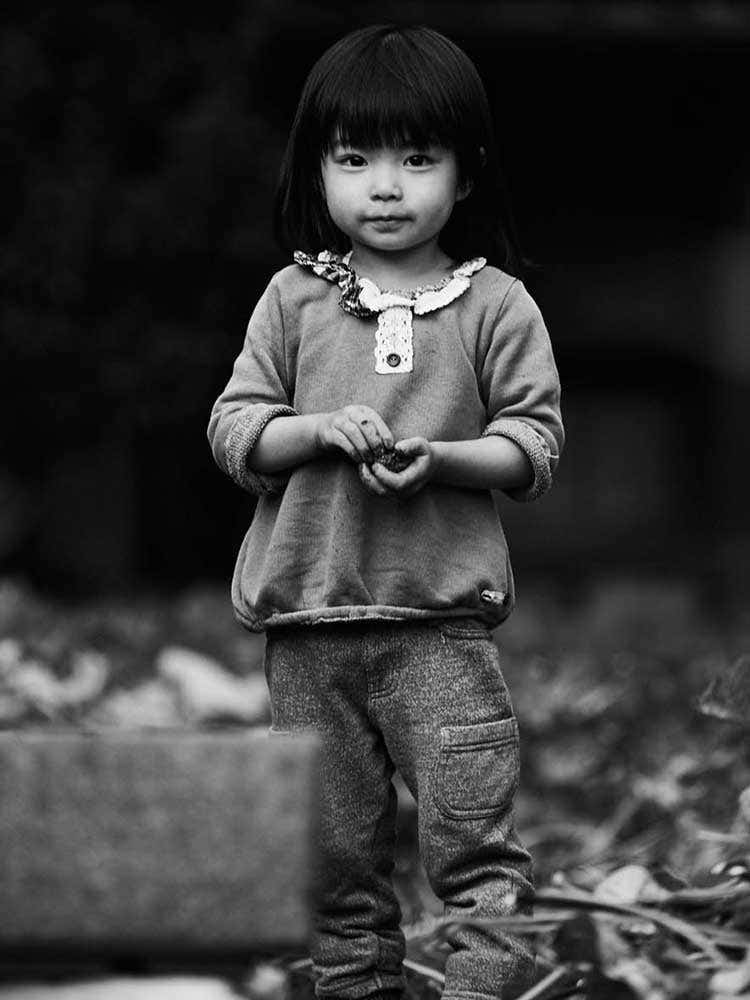
We'd come to Mugino-ie because it's where Tanahashi wanted to cook us a meal that demonstrated his modern shojin and summed up everything he'd shown me. Tanahashi said he first came here when he was a monk. I could see why he'd chosen it—beside its staggering beauty, everything about the place spoke to these venerable and vulnerable culinary traditions and their meaning. Just below us, Yamazaki's son harvested sweet potatoes. Yuki and her older sister helped by hugging the dirt-covered tubers, running around and giggling madly.
Tanahashi spent part of the morning grinding sesame; he sat on the floor, slowly moving the pepperwood pestle in a heavy ridged mortar, his back still and his eyes shut in concentration. Later, in the farmhouse kitchen, he cooked beside an assistant, a slim 30-something Londoner named Neil. Tanahashi darted amid steaming pots and mixing bowls—simmering seaweed, slicing chestnuts, measuring out spices—and conferred with Neil in Japanese. The serenity of the sesame-grinding session had evaporated. He looked harried and quite possibly nervous—in other words, like a chef preparing a big meal in an unfamiliar kitchen.
Though he was preparing lunch, the meal wasn’t ready until three. Someone had opened the screens in the farmhouse, and we gathered around a low table with a view of the mountain and the lake and all the glorious particulars. I was feeling impatient and hungry, but the dishes Tanahashi finally brought from the kitchen made everyone fall silent.
After ambrosial sesame tofu there was a rich broth of mushrooms and grated turnip, garnished with mizuna stems, a lotus-root croquette, and two colors of chrysanthemum. Fried bundles of paper-thin yuba were filled with nameko mushrooms, shiso and, unexpectedly, cinnamon. An oddly unified cool salad of tofu, fuyu persimmon, apple, mustard, and hand-ground sesame paste was followed by the centerpiece—a dish Tanahashi named Fuki-Yose, or Autumn Leaves. On a huge red-spotted persimmon leaf, he'd arranged roasted chestnuts, gingko nuts, fu, shiitake mushrooms, lotus root, Kyoto carrot, burdock, and the caramelized, slightly garlicky bulb of the lily plant. Tanahashi finished the meal with sliced figs and grapes encased in transparent cubes of sweetened agar-agar, an elegant dish that nonetheless got indexed in my mind as Buddha's Jell-O.
All of it looked arresting, with flavor and texture combinations that somehow managed to taste harmonious yet consistently surprise. More important, Tanahashi had prepared a meal worthy of a fine-dining restaurant kitchen, and he did it using no animal products, no scarce or expensive ingredients, nothing unhealthy or from far away. The lunch was everything he'd promised—a traditional hymn to autumn presented in a resolutely modern style. As we took in the meal, it seemed entirely possible that, at a time of rapidly dwindling resources, shojin might come to shape the way we eat, and sooner than we expect.
After we cleared the dishes, Tanahashi sat down at the table, looking relieved and proud. For the first time since we’d met, he smiled with his whole face. A breeze came off the lake and blew through the farmhouse. It was getting dark. On a two-lane road somewhere below us, a stream of buses and trucks headed for Kyoto and Osaka, but all we could hear was the wind in the cedars and, farther off, the cawing of a crow.
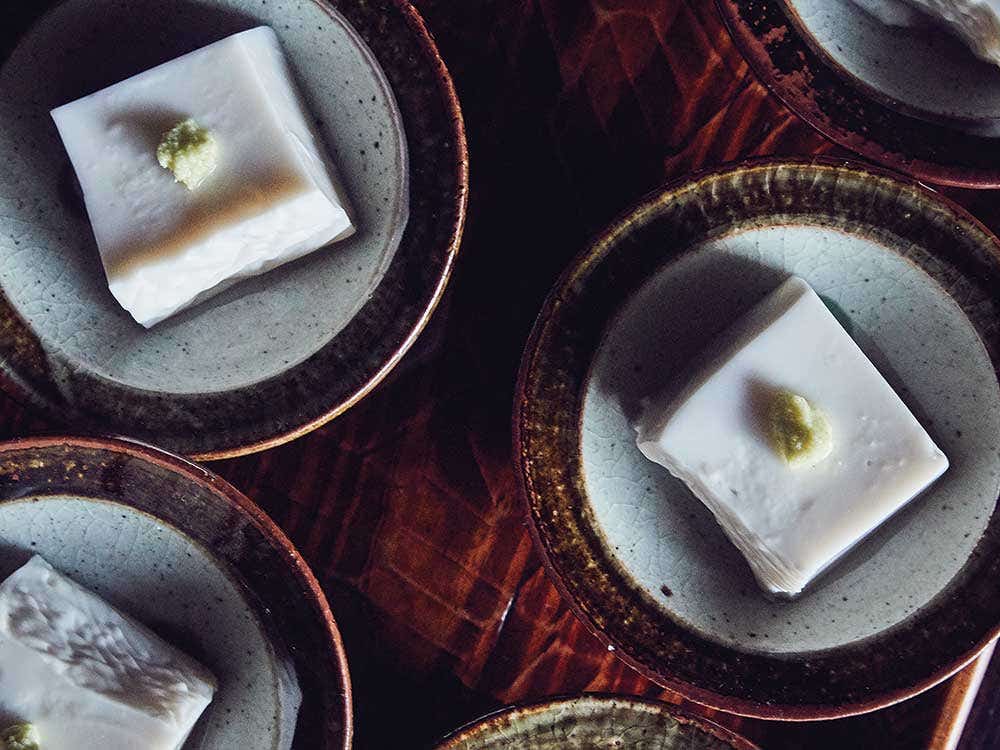

Keep Reading
Continue to Next Story










